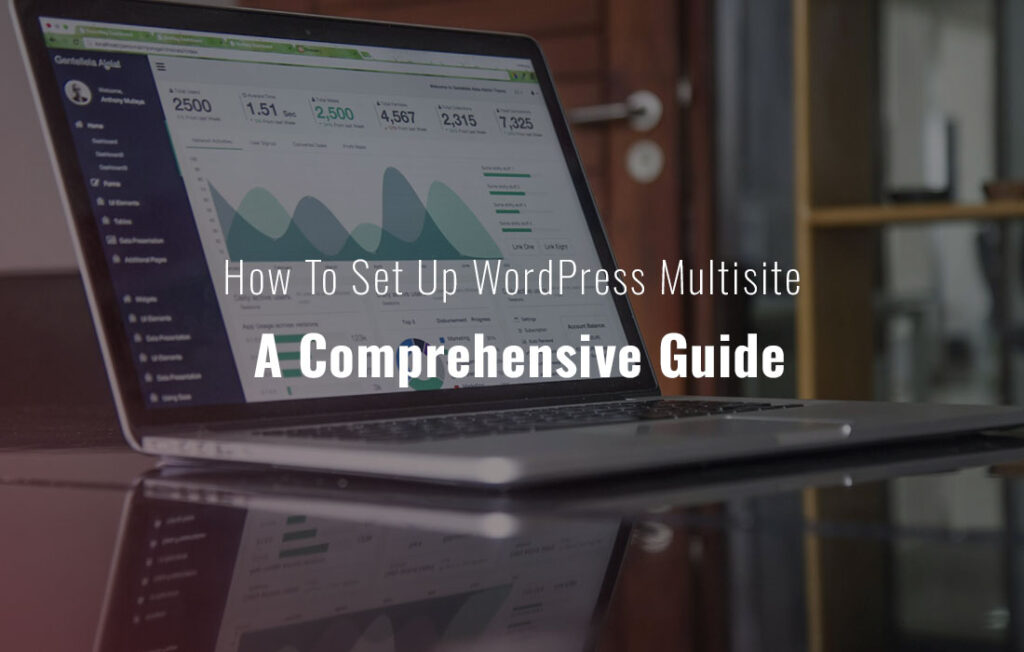Are you encountering a common WordPress error on your site?
You can troubleshooting WordPress errors yourself by following easy troubleshooting WordPress errors steps.
We will guide you step by step through troubleshooting WordPress errors in this beginner’s guide.
– Table of Contents
WordPress often displays an error message, such as the 404 error, when you attempt to access your website. Please see our guide on how to fix WordPress posts returning 404 errors for more information about the ‘page can’t be found’ error in the following image.

Creating a full backup of your WordPress site should be your first step.
If something goes wrong, backups make it easy to restore your WordPress site. They are the first line of defense against security threats, hacking, and data loss. Make sure that you have a recent backup of your WordPress site if you already use a backup plugin. You should create more than one copy of your WordPress backups and store them in a cloud storage service such as Dropbox or Google Drive.
The following image shows how UpdraftPlus lets you choose between different online storage services when backing up your WordPress site.
 Check out our expert picks of the top WordPress backup plugins if you haven’t started using one yet.
Check out our expert picks of the top WordPress backup plugins if you haven’t started using one yet.
Your WordPress site’s database and files can still be manually backed up, even if you are not currently logged into the admin area.
Your browser may not realize that a WordPress page or post has changed and will load an outdated version from the cache, so you’ll see an older version of your post or page. For more information on how to clear your browser cache, please see our guide on how to clear browser cache in all major web or more details, please see our guide on how to clear browser cache in all major.
It is possible that you are seeing a cached version of your website if you are using a WordPress caching plugin like WP Rocket. It’s possible that you’ll see a cached version of your website even though you haven’t installed a caching plugin with some WordPress hosting companies, such as Bluehost and SiteGround. Your WordPress cache may need to be cleared if your site shows outdated content.
There are often conflicts between plugins, themes, or the core of WordPress that cause errors.
When these errors occur, the easiest way to troubleshoot them is to deactivate all your WordPress plugins. You can then reactivate them one by one, to see if the error occurs again.
You can access the plugins page of your WordPress site if you have access to the admin area.
 In order to deactivate all selected plugins, select the ‘Deactivate’ option from the ‘Bulk Actions’ drop-down menu. Then, click the Apply button.
In order to deactivate all selected plugins, select the ‘Deactivate’ option from the ‘Bulk Actions’ drop-down menu. Then, click the Apply button.
 You can deactivate your plugins using FTP if you are unable to access the WordPress admin area due to an error.
You can deactivate your plugins using FTP if you are unable to access the WordPress admin area due to an error.
If you haven’t used FTP before, please refer to our guide on how to use FTP to upload files to WordPress if you don’t know how.
Open your FTP client and navigate to the ‘wp-content’ folder.
 Here you’ll see a folder named ‘plugins.’
Here you’ll see a folder named ‘plugins.’
By Control-clicking or right-clicking this folder, you can select ‘Rename’.
After you have done that, rename this folder to ‘plugin.deactivate.’ This will deactivate all of your WordPress plugins.
You can find more detailed instructions in our article on deactivating all plugins when you cannot access WordPress admin.
If your WordPress site is now working perfectly, then you know that the problem is a plugin issue. After deactivating your plugins, you should be able to see if the problem still exists.
It is now possible to investigate when the problem starts occurring again by reactivating your plugins one by one.
You can now reactivate your plugin by going to Plugins » Installed Plugins and clicking on its ‘Activate’ link.

When the problem recurs, you’ll know which WordPress plugin is causing it. You can then uninstall that plugin and search for a better one.
When the problem recurs, you’ll know which WordPress plugin is causing it. You can then uninstall that plugin and search for a better one theme like Twenty Twenty-One or Twenty-Twenty Two.
As WordPress themes created by its official team, they’re less likely to cause conflicts or have bugs than some other third-party themes.
Change the theme by going to Appearance » Themes.

You can then hover your mouse over any of the default themes.
Then, just click on the ‘Activate’ button.

FTP can be used to switch to a default theme if you cannot log into your WordPress admin area.
The first step is to connect to your website with an FTP client and then go to the theme folder under /wp-content/themes/.
 Your WordPress website’s themes are located in this folder.
Your WordPress website’s themes are located in this folder.
In order to make this test easier, it’s a good idea to download a copy of your current active theme before making any changes.
The current theme can be downloaded by right-clicking or controlling-clicking the folder with the theme’s name.
The next step is to select ‘Download.’

Delete every theme inside your FTP client except a default WordPress theme like Twenty Twenty-Two once you’ve downloaded this folder. WordPress will automatically switch to the default theme when your active theme is no longer available.
The theme may have caused the error if this solves it. Our experts have compiled a list of the best WordPress themes for responsive websites to help you out. To restore your original theme, use the copy you downloaded to your computer. For more detailed instructions, see our guide to uploading files to WordPress using FTP.
Your site may experience unexpected 404 errors if your WordPress permalink structure is not updated or set up correctly. 404 errors can be fixed by regenerating your links, which will rebuild your permalink structure. This can be done instantly and without changing anything on your WordPress website.
Go to Settings » Permalinks to regenerate your permalinks.

Scroll down and click on ‘Save Changes’ at the bottom.
You should see a message confirming that WordPress has updated your permalink structure after a few moments.

Our complete guide on how to regenerate WordPress permalinks will provide you with more information.
A corrupt .htaccess file might be causing an internal server error.
Delete your .htaccess file, and WordPress will create a new one for you.
You can delete your current .htaccess file by connecting to your site using an FTP client. Your site’s root directory contains the .htaccess file.
You can find this root directory by opening the folder that shows the name of your website.
Then go ahead and open the ‘public_html’ folder.

The .htaccess file will now appear inside this folder.
Your FTP client may hide sensitive files if you do not see the .htaccess file. For more information, see this article on why you cannot find the .htaccess file on your WordPress site.
If anything goes wrong, simply restore your original .htaccess file by making a copy first.
Give it a click and then select ‘Download’ to download your .htaccess file

In your WordPress admin area, go to Settings » Permalinks, followed by deleting the original .htaccess file.
Your website’s .htaccess file will now be created once you click on the ‘Save Changes’ button.
It can cause redirect issues, 404 errors, and other common problems if you use the wrong settings for your ‘WordPress Address’ and ‘Site Address’ options.
You can check your URL settings under Settings » General.

There are two fields on this page: ‘WordPress Address (URL)’ and ‘Site Address (URL)’.
You must make sure that the URLs for these two files are identical.
You can change these URLs using FTP if you cannot access the admin area of your WordPress site.
These URLs can be accessed in two ways once you connect to your site using an FTP client.
Update WordPress URL and Site URL Settings in wp-config.php File
With this method, you’ll add some code to your site’s wp-config.php file.
The file will be located in the root folder of your website along with other folders like wp-content.
 Once you’ve found this file, give it a click and then select ‘View/Edit.’
Once you’ve found this file, give it a click and then select ‘View/Edit.’
This will open the file in your computer’s default text editor, such as Notepad.
In this file, find the line that says:
/* That’s all, stop editing! Happy blogging. */
Just before this line, add the following code:
| 1
2 |
define(‘WP_HOME’, ‘http://example.com’);
define(‘WP_SITEURL’, ‘http://example.com’); |
Don’t forget to replace ‘example.com’ with your own domain name. You can then save your your changes and upload the file back to your server.
Update URLs Using functions.php File
You can also update these URLs using your theme’s functions.php file.
In your FTP client, go to the ‘wp-content/themes/’ folder.
Then, open the folder for your current active theme and find its functions.php file.

You can now open the functions.php file in your computer’s default text editor by clicking on the functions.php file and selecting ‘View/Edit.
The functions file should have the following lines at the bottom:
| 1
2 |
update_option( ‘siteurl’, ‘http://example.com’ );
update_option( ‘home’, ‘http://example.com’ ); |
Now you should be able to access the WordPress admin panel.
Go to Settings » General. You can now change your ‘WordPress Address (URL)’ and ‘Site Address (URL)’ by following the same steps.
In order to do this, you need to open your functions.php file and delete the code that you added. To do this, simply open the file and delete the code.
Your website should automatically be found by search engines like Google if you follow WordPress SEO best practices. There are times, however, when a newly created WordPress website does not appear in search engine results. This could occur if the site is hidden.
Go to Settings » Reading to check your site’s settings.

Make sure you have unchecked the box next to ‘Search Engine Visibility’ at the bottom of the page.
Search engines will not index your website if this option is selected.

This setting is often used by website owners who don’t want their content to appear in search results while they are still working on their site.
You might accidentally check this setting and forget about it.
Ensure this option is unchecked and click on ‘Save Changes’ to ensure your site appears in search results.
You may want to create a coming soon page if you are still working on your site. A well-designed coming soon page will generate buzz around your site and even act as a lead generation tool. Learn how to create a beautiful coming soon page using WordPress by following our guide.
The mail settings of some WordPress hosting providers may not be configured properly, which can prevent you and your visitors from receiving emails sent by WordPress.
A contact form plugin won’t send you an email when visitors fill out your form, and you won’t receive WordPress notifications regarding serious security threats. You can fix this problem by using an SMTP service provider. For more details, see our guide on how to fix WordPress not sending emails.
You should scan your WordPress site with Sucuri if you suspect that it is infected with malware. A total of 450,000 WordPress attacks were blocked in 3 months using Sucuri website security monitoring service. We have a guide on how to scan your WordPress site or Troubleshooting WordPress Errors for potentially malicious code that can help you find out more.

































